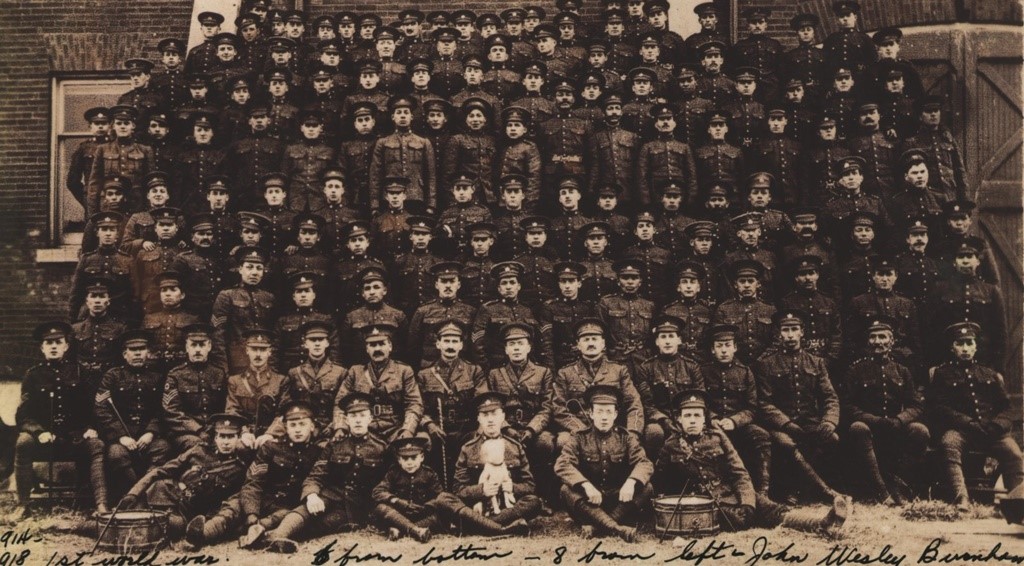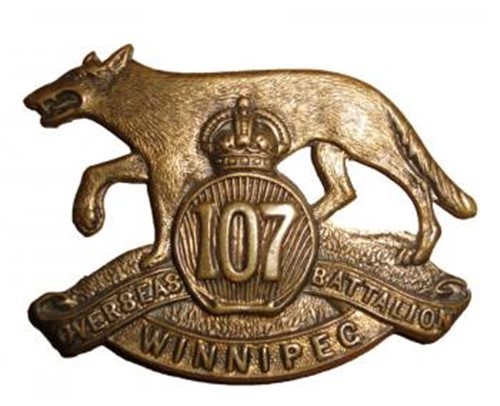First Nations in the Great War
Statistics:
– More than 4 000 status Indians enlisted in the Canadian Expeditionary Force (not including Metis and Inuit).
– Over 300 died overseas, but many more passed soon after their return (wounds, sickness, disease).
– Canadian aboriginals were awarded more than 75 medals for their actions during the First World War.
– They were well renowned as top-notch scouts, warriors, and snipers.
Background:
Initially, the Canadian Expeditionary Force didn’t accept aboriginal soldiers, but by 1915 their participation was approved. By 1917, active recruitment of First Nations’ men began. Throughout this time, support for the war and for the men who enlisted was divided within aboriginal communities; this perspective was in concert with many white towns and villages across the country. Nevertheless, aboriginal men joined the armed forces at higher rates percentage wise than non-Aboriginals.
The largest influx came from the Six Nations, centred around Brantford, Ontario, and the Mohawks from the Bay of Quinte, Ontario. Those who stayed home also lent a hand; the Six Nations Women’s Patriotic League crafted items and stocked care packages to be sent overseas to help the men. First Nations’ women gained more jobs as a result of the war, but in 1917 they were not granted suffrage alongside other women.
Traditional Knowledge, Field Craft, Warriors
Aboriginal Canadians quickly exhibited their expertise on the land. Tracking, scouting, camouflage and concealment, marksmanship, field craft, and proficiency with animals were skills that were in high demand on the Western Front. Many First Nations’ men gravitated towards positions of sniping the enemy or reconnoitering the battleground. Of the top 12 snipers in the Great War, 8 were Canadian. A few of those, including the top sniper of all belligerents, Francis Pegahmagabow, were Indigenous. Given that Aboriginal Canadian soldiers made up such a small percentage of the Canadian Corps, having such a high representation amongst the sniping ranks is a very honorable achievement.
Two all-Aboriginal battalions were raised to quench the demand of those joining up. The 107th Timberwolf Battalion, based out of Winnipeg, was one. Brock’s Rangers (114 Bn.), consisting entirely of Six Nations men, was the other. (Brock’s Rangers had their own community group, the Brock’s Rangers Benefit Society, who sent them care packages). Upon disembarking in Europe, the latter battalion was broken up and its men distributed amongst other units, while the Timberwolf Bn. was reclassified as a Pioneer (work) battalion and was later disbanded in 1920.
Remarkable Individuals
Francis Pegahmagabow, Perry Island Band/Wasauksing, ON (Ojibwe)
• “Peggy” served as a sniper, messenger, and scout in the 23rd Canadian Regiment’s 1st battalion.
• Top sniper in the Great War with 378 credited kills and another 300 enemies taken prisoner
• Reached the rank of Company Sergeant Major
• After the war, Peggy slept upright in chairs so that his gas-damaged lungs would not fill with fluid.
• Awarded the Military Medal with 2 bars, the 1914-15 Star, the British War Medal, the Victory Medal
• He returned home to serve his band twice as Chief. Francis passed away in 1952.
Henry Norwest, eastern Fort Saskatchewan, AB (Cree Metis)
• “Ducky”, a rodeo man and saddler, served as a sniper, messenger, and scout in the 50th battalion.
• Fellow mates described Norwest as an expert in camouflage, concealment, and marksmanship.
• He was a leading sniper amongst British forces, perhaps the best, with 115 confirmed kills.
• Reached the rank of Lance Corporal, was well-liked by his companions, and was awarded the Military Medal with one bar (received a citation for his role at Vimy when taking the Pimple)
• In August 1918, Ducky was shot by an enemy sniper outside Amiens. He is buried there.
Johnson Paudash, Hiawatha First Nation, ON (Ojibwe)
• Johnson, grandson of the last sachem of the Mississaugas, joined the 21st battalion early in the war.
• Paudash joined the CEF when he was 39 years old and reached the rank of Lance Corporal.
• Acted as a sniper, messenger and scout. Credited with 88 kills and was awarded the Military Medal
• After the war, he returned home, and served as Chief in his community. He passed in 1959.
John Shiwak, Innu Nation, NL (Inuit)
• Born in Rigolet, Labrador, John grew up in a traditional way of life. Learn more here
• He joined the Royal Newfoundland Regiment in 1915 (at that time, NL was separate from Canada).
• Some declared that he was the best British sniper, a skill he attributed to his “swatching” seals.
• He attained the rank of Lance Corporal. Decorated with the British War Medal and the Victory Medal
• Shiwak was killed by a shell near Cambrai late in 1917. He rests at the Beaumont-Hamel Memorial.
Mike Mountain Horse, Kanai Nation, AB (Blackfoot)
• Mike joined the CEF in 1916 after having worked as a scout for the North West Mounted Police.
• After arriving in Europe in 1917, Mike was moved into the 50th battalion.
• He recorded his war story on a traditional robe of cowhide. Click to watch a video about Mike’s war robe.
National Aboriginal Veterans Monument
Unit Home
1917 Events. Promotions. Hill 70. Canadian Politics. Russia and France Teeter. Military Service Act. Wartime Elections Act.
Battle of Passchendaele
Village. Ludendorff. Mud. 16 000 Casualties. Colwell. Before and After Picture. ANZAC.



